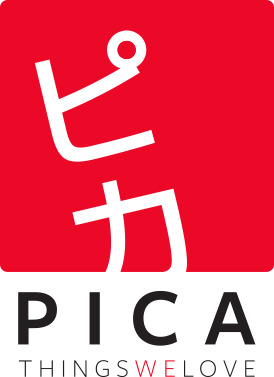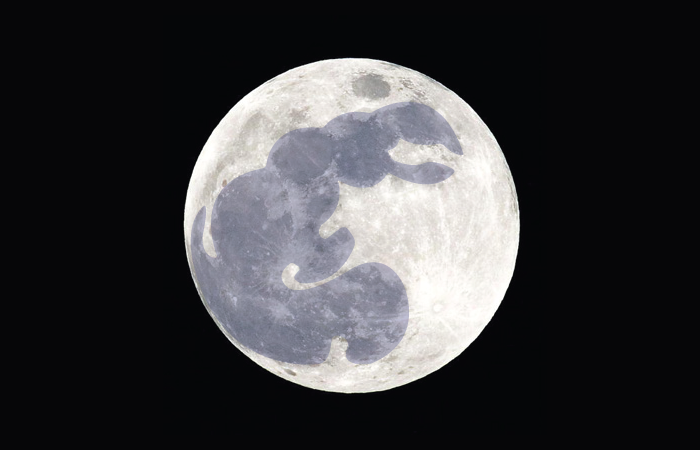In Japan, as the sakura trees bloom, the spring commences with a celebration, known as 花見 (Hanami, ‘flower-viewing’), with lots of drinking and outdoor socializing. The autumn in Japan, however, commences on a slightly different note. The 中秋 (chushu, mid-autumn) highlight is 月見 (Tsukimi, ‘moon-viewing’). In contrast to the spring’s celebration of the newly bloomed sakura tree blossoms, it is a harvest festival honouring the autumn full moon.
Traditionally Tsukimi celebration takes place on the 15th day of the eighth month of the Japanese lunar calendar (太陰暦, taiinreki). According to the modern solar calendar (新暦, shinreki), this date falls from mid-September to early October. Because the celebration takes place during the 満月(mangetsu, full moon), the date shifts each year. This year, 2015, Tsukimi falls on September 27th. This day is also known as 十五夜 (juugoya, fifteenth night) or 中秋の名月 (chushu no meigetsu, mid-autumn harvest moon). It is believed that the mid-autumn moon is the most beautiful, as it appears especially bright in the clear autumn air due to the relative position of the earth and the sun during this time of the year.
Tsukimi, however, is not simply a solitary moon gazing experience, but a historical tradition of holding parties to view the harvest moon in style that dates back a millennium ago. In fact, even at times when the moon is not visible, such as 無月 (mugetsu, "no-moon") or 雨月 (ugetsu, "rain-moon"), the festivities do go on.
A bit of short history.
Tsukimi first began practiced in Japan during the Heian era (平安時代, Heian jidai; 794 to 1185), as elements of the Chinese Mid-Autumn Festival (Moon Festival) were first introduced. The aristocrats of that time would hold events of reciting poetry under the full moon aboard boats, in order to revel in the moon’s bright reflection on the surface of the night’s waters. During the Edo era (江戸時代, Edo jidai, between 1603 and 1868) Tsukimi was celebrated with much vigour, that sadly came to an end in the Meiji era (明治時代, Meiji jidai, from 1868 through 1912).
So what to do on the day of the event?
Today Tsukimi is celebrated in a company of small gathering in a place where the moon can be seen clearly to be appreciated. Traditionally these places would be the 縁側 (engawa, veranda, porch or balcony) of one's home. The decorations are centred around the autumn plants, with 薄 (susuki, pampas grass) being the main event.
Another decorative piece are the Tsukimi-dango (月見団子) that are placed as an offering to the moon as the thanks for the harvest. The Tsukimi-dango are round rice dumplings (mochi) that are meant to resemble the moon - celebrating its beauty. They are piled in a small pyramid on an altar during the festival as a prayer for an abundant harvest. Other seasonal foods that take part in the festival are taro, edamame, chestnuts and sake.
During the month leading up to the Tsukimi festival, it is common to find restaurants, as well as homes, serving moon-themed dishes. Some of these dishes are Tsukimi-soba and Tsukimi-udon, where the noodles in broth are topped with an egg to resemble the bright moon in the dark sky. Other Tsukimi inspired foods include rabbit-shaped (why? - see below) and moon-shaped desserts.
The most notable of them all, though, has to be the Mc Donald’s Tsukimi burger (月見バーガー). Introduced in 1991 and served as an autumn seasonal menu ever since, Tsukimi burger is special due to the addition of a fried or poached egg to the patty. The egg once again is meant to resemble the moon, and is a tasty way to get in the moon festival spirit.
So, what’s up with the rabbit?
In North American culture, the full moon is thought to have a face. In Japan, however, instead of a face you see an image of a rabbit pounding the mochi (rice cake) dough using a huge mortar and a mallet. According to Japanese folklore, a rabbit lives there, making the mochi dumplings every full moon. As a matter of fact there is even a children’s song about it:
うさぎ うさぎ
何見て 跳ねる。
十五夜お月さま
見て 跳ねる。
Romaji:
usagi usagi
nani mite haneru.
juugoya otsuki-sama
mite haneru.
English translation:
Bunny, Bunny
What are you looking at as you hop?
The Moon of the 15th night
I’m viewing as I hop.
You can check it out on YouTube here.
If you happen to miss the festivities or the moon-viewing this year, no worries! There is always next year. Be sure to mark your calendar and get into the spirit of it all by September 15th, 2016.




